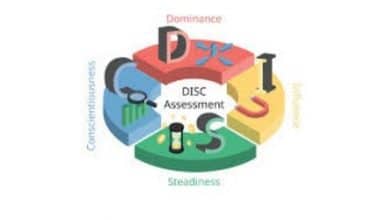What drives you? If you ask 100 employees, you will get 100 different answers. Perhaps it’s the promise of working on something they’re enthusiastic about. It might be a company culture that makes people feel like they truly belong. Others simply continue to strive for a consistent income with the prospect of raises, bonuses, and other financial incentives. Organizations can provide many forms of rewards depending on what drives employees.
If you want to engage your workforce, you must first understand the different sorts of employee rewards and how you can use them to create an employee rewards program that interacts with every team member. Let’s look at how to incorporate each flavor of rewards into your company’s offers.
What are Employee Rewards?
Employee rewards are advantages or bonuses provided to employees who go above and beyond what is required of them or who fulfill certain performance goals. Employees that achieve particular performance or quality targets might be rewarded through a reward program. As needed, you can change the type of rewards and incentives.
The Six Different Types of Employee Rewards
There are numerous ways to classify rewards, and many of them overlap. When categorizing them, the goal should be to categorize them in ways that clarify how and why employees should be recognized. Here are six sorts of employee rewards to help you establish an effective rewards program that team members actually value.
#1. Intrinsic rewards
All rewards are either intrinsic or extrinsic at the highest level. Intrinsic rewards are intangible, internal motivators such as the potential of learning a new skill, obtaining recognition from a leader you like, or building a fruitful, collaborative connection with a new coworker. While these elements may not receive as much attention as more tangible rewards, they are an essential component of any successful rewards system. This is due to the fact that they engage on a deep level, bringing significance and fulfillment in ways that other sorts of rewards cannot.
#2. Extrinsic Rewards
The flip side of the coin is extrinsic rewards. They include all of the physical methods in which employees are honored, such as a better salary, more PTO, or a slew of reward points presented by a grateful team member. Regardless of how important intrinsic rewards are, your organization cannot afford to overlook these more visible expressions of gratitude. Just as a large salary and excellent perks do not make a job worthwhile, an extraordinary culture, significant social recognition, and other intrinsic rewards will soon appear insincere if your firm does not provide clear evidence that it loves its people.
#3. Financial rewards
Financial rewards are among the most common extrinsic motivators. It’s a rare team member who doesn’t value a salary raise, a surprise bonus, or a gift card to their favorite restaurant. However, monetary rewards should not be the only consideration. Rather than confining cash incentives to periodic rewards handed down by leadership, use an employee rewards platform to spread this vital form of recognition throughout your firm.
Select a solution that incorporates a point-based rewards system, in which employees receive points each week or month that they may then gift to others. The receivers can then exchange their points for customized rewards they wish and pay it forward by making their own points gift, thus continuing the cycle of recognition.
#4. Non-monetary rewards
Non-monetary rewards include both extrinsic motivators, such as lunch with the CEO or flexibility in when and where an employee works, and intrinsic motivators, most notably social recognition.
Allowing employees to know how much their work is valued, whether through a public awards ceremony or a simple note in chat, should be a regular habit for everyone in your firm, from the top down. With a mobile-first, easy-to-use employee recognition solution, HR must prioritize training leaders on the importance of non-monetary rewards and enable all employees to deliver recognition whenever the need hits them.
#5. Employee incentives
Employee incentives comprise all of the rewards that your organization provides to its employees. Employees today expect employers to go above and beyond typical perks like retirement plans and health insurance by providing bespoke benefits suited to their specific needs. This can range from increased freedom to choose their work duties and projects to tuition reimbursement that allows them to seek the degree they’ve always wanted. Ask your employees what they think of your present perks, listen to what they have to say, and then take action to tailor your incentive program to their feedback.
#6. Wellness-based rewards
Employee wellness incentives are a strong approach to improving team members’ lives both on and off the job. You may reward employees for meeting their wellness goals by combining your employee recognition platform with a wellness solution. You can also promote both mental and physical well-being throughout your organization by providing appropriate incentives such as mindfulness classes and gym memberships.
What is the Distinction Between Employee Rewards and Employee Recognition?
First and foremost, it is critical to distinguish between employee rewards and employee recognition. Some people use the two terms interchangeably, although they are not the same. Recognition can be regarded as a sort of reward, but recognition is not a reward in and of itself.
Rewards programs are founded on the principle of rewarding good performance with a monetary or physical benefit. They can be fairly costly for your organization if you are not careful, but when utilized properly, they can enhance employee performance.
The purpose of an employee recognition program, on the other hand, is to make them feel valued and proud of their job. They are far less expensive than rewards programs and may be a viable solution for smaller firms on a limited budget. Alternatively, the two types of programs can be utilized together.
What are the Benefits of Employee Rewards Programs?
Creating a new employee rewards program can provide various benefits to your company. The following are some of the key reasons you should consider an employee rewards program.
- Thanking someone for their hard effort.
- Increasing employee motivation and productivity by making them desire to come to work.
- Creating a positive work environment by creating friendly rivalry among employees who are seeking to reach rewards targets.
- Increasing employee retention by making your staff desire to stay with you.
Keep in mind, however, that employee rewards schemes can be costly. Make sure you compare the cost versus the value and strike a fair balance.
How to Create an Employee Reward System
When creating a new employee rewards program, it’s critical to consider factors like your budget, corporate goal, and the rewards targets you want to set in mind. The methods below will assist you in creating a fantastic rewards program for your company.
Step #1: Figure out why you want a program.
Before implementing an employee rewards program, you should understand why you need one and what company goals it will advance. This will assist you in focusing your program and providing the greatest benefits.
Step #2: Develop a budget.
It’s critical to understand how much money you have to spend on your rewards program. You can always come back to the budget later.
Step #3: Determine the reward criterion.
Before launching your employee rewards program, establish specific criteria for how and when employees should be recognized. This will contribute to the program remaining fair and competitive.
Step #4: Choose your rewards.
You can choose from a variety of rewards, such as monetary bonuses or real stuff. Sending out a survey to determine what rewards your staff would like to receive could be a fantastic idea.
Step #5: Put your program into action.
It’s time to put your employee rewards program into action after you’ve fine-tuned it. Make certain that your personnel understands what it is and how it operates. It is frequently helpful to create a rewards handbook or document that clearly describes your program.
Structured vs. Unplanned Rewards
Employee rewards can be classified as either organized or spontaneous. Structured rewards are periodic awards that employees expect and know they will get. These can become unsuccessful since they are frequently perceived as uninteresting.
They can also pose issues if certain employees fail to meet their targets but believe they should be compensated anyhow. The employee is less likely to expect unexpected rewards, which makes them more delightful. They are easy to personalize and can be used to recognize exceptional performance, the completion of a difficult task, or the signing of a large contract.
10 Unique Employee Rewards Ideas
There are numerous ways to reward staff, especially if you are willing to invest some money and get creative. Here are ten innovative ideas for recognizing your employees.
#1. An additional day off
Most employees would welcome the opportunity to have a three-day weekend, which you may provide by rewarding staff with additional days off when they accomplish or exceed performance and quality standards.
#2. Free dinner vouchers
Giving certificates to a renowned cafe or restaurant is another fantastic method to show your thanks to certain employees. This will allow them to go out of the house for a few hours and unwind, and they should appreciate the gesture.
#3. A unique parking space
You might even provide each employee their own dedicated parking spot for a week, a month, or as long as they continue to accomplish their goals. You may even add a small reservation sign to emphasize that this is their space.
#4. Tickets to sporting events
You must be cautious with this one because not everyone enjoys watching sports. However, tickets to this weekend’s baseball game may be the best gift ever for some people.
#5. Tickets to a festival or a concert
A festival or concert ticket may be the ideal option for those who do not enjoy sports. Again, you need to use caution here to ensure that you select appropriate tickets for each employee.
#6. Wine-tasting or brewery tours
A wine tasting or a brewery tour could be the ideal way to honor a full team or department. It’s best to do this at the end of the week so your staff can unwind with a few drinks if they want to.
#7. Conference Tickets
For some team members, the opportunity to attend a unique conference may be the best gift ever. You may send a certain employee to a conference of their choosing as a unique reward. They might even learn something beneficial for your organization!
#8. A food basket
Who doesn’t enjoy a tasty food hamper? There are numerous pre-made hampers available that include artisanal delicacies and specialty components. You may even put together a personalized hamper to show your staff how much you care.
#9. “Dress-down” day
Occasionally rewarding your workers with a dress-down day will help raise morale and keep them interested in the job. Nothing beats ditching the daily uniform in favor of more casual attire on occasion.
#10. Days when you can work from home
If your staff is still mostly based in the office, allowing employees to work from home a few days per week could be a simple yet effective reward. This will make them feel calmer without the stress of the daily journey, and you may even find that they are more productive! In the end, your rewards program is only as restricted as your imagination. It’s a good idea to solicit feedback from your staff to verify you’re compensating them appropriately.
Conclusion
Employee rewards can help increase workplace morale and performance. You can express appreciation for good performance and high-quality work by developing a great rewards program. Employee rewards and reward programs come in a wide variety of forms. Now that you’re aware of the advantages, it may be time to create a program if you don’t already have employee rewards in place.
- WHAT IS INTRINSIC VALUE: Meaning, Examples & How to Calculate It
- REWARD PROGRAMS: Best, Credit Card, Hotel, Airline & Gas Loyalty Programs
- EMPLOYEE RECOGNITION: Ultimate Guide To Employee Recognition Programs
- Best Employee Recognition Ideas In 2023
- EMPLOYEE RECOGNITION PROGRAMS: Meaning, Ideas, Examples & Steps to Build an Effective One






